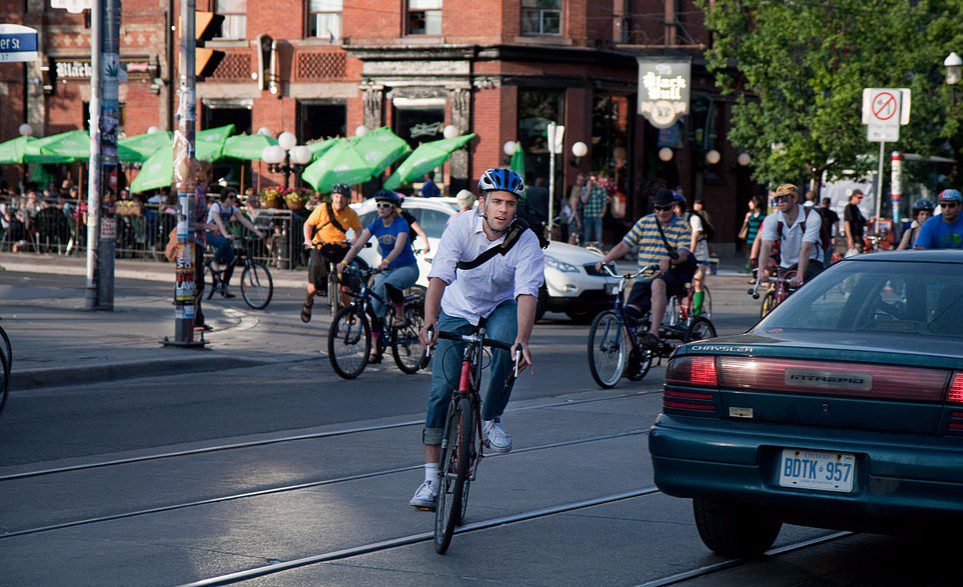Statistics show 2016 was a terrible year for dooring collisions in Toronto
Cycle Toronto argues that a 'minimum grid' of protected bike lanes would reduce the number of such collisions.


In news that is sure to do nothing to alleviate the anxiety some Toronto riders feel traversing their own town, Toronto Police Service statistics indicate collisions between motor vehicles and cyclists are on the rise. An analysis of dooring collisions provided by the Toronto Police Service, according to the city’s chief advocacy group, indicates that the dreaded meetings between car and bike in the city rose once again in 2016.
That advocacy group, Cycle Toronto, released a statement on the matter earlier this week.
Statistics show that in both 2015 and 2016, the number of dooring collisions steadily rose, then spiked in 2016. Last year, alarmingly, the number of such collisions was 58% higher than the baseline for data established in 2014, and significantly involved roads with streetcar tracks and on-street parking. Elsewhere, hot spots included destination-rich streets like Bloor Street West and Yonge Street, routes without streetcar tracks but heavy with places for vehicles to stop — whether dropping off or picking up — and then take off again.

Streets with bike lanes, Cycle Toronto pointed out, had lower dooring rates. Richmond and Adelaide streets in Toronto’s downtown core—the recent recipient of separated bike lanes—saw an even lower instance of these collisions.
Though these collisions are among the most dangerous in a dense, traffic-heavy city like Toronto, they were conspicuously absent from Toronto’s Road Safety Plan that was approved by city council in 2016, Cycle Toronto says, nor were they among the 1,070 cycling collisions reported by Toronto police for 2016. Were they an official consideration, that number would be closer to 1,279—though even number only involves the collisions actually reported.
According to Jared Kolb, Cycle Toronto’s executive director, that’s simply unacceptable.
RELATED: Liberal MP believes the ‘Dutch reach’ could save cyclists’ lives
“Dooring collisions can mean life-changing injuries or death for cyclists,” Kolb said in Cycle Toronto’s release, arguing for a minimum grid of protected bike lanes for city riders. “We’ve outlined a number of key recommendations for the province, city, drivers and cyclists. At the end of the day, people riding bicycles are just average Torontonians trying to get from A to B like everyone else. They shouldn’t have to risk lasting physical trauma or death to do so.”
The full text of Cycle Toronto’s report on the matter can be found online.
